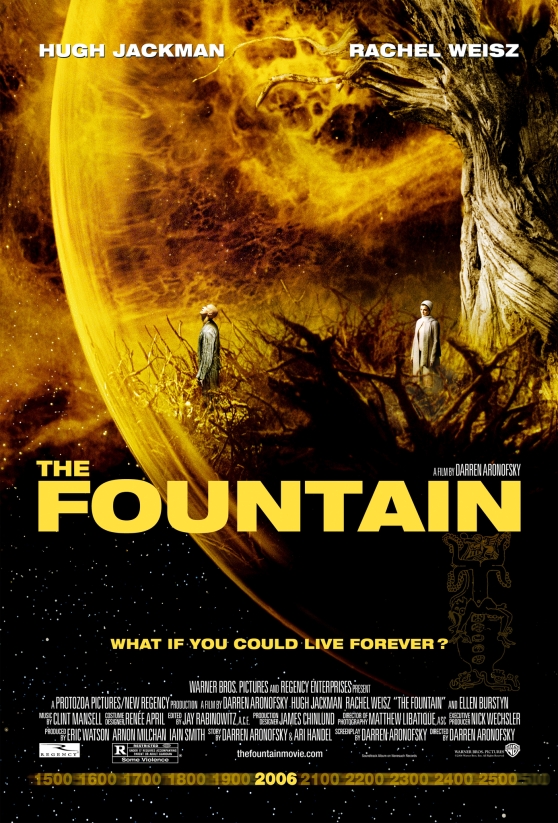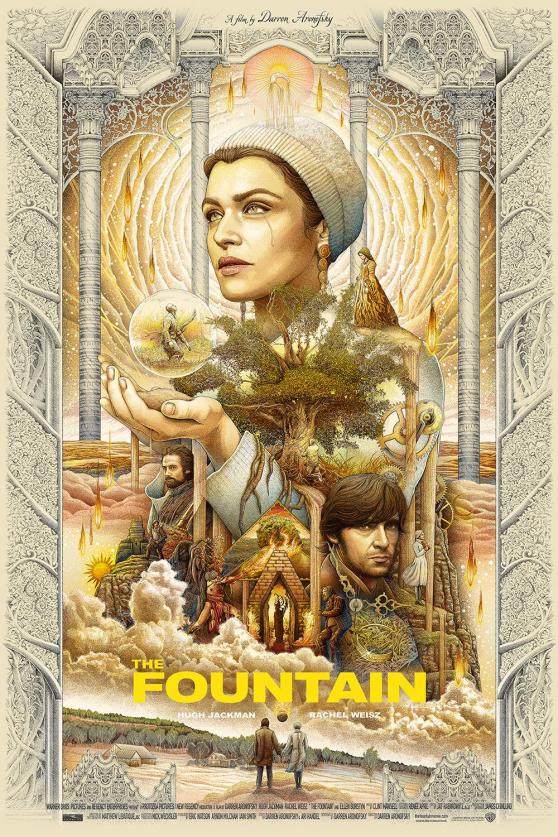timespace coordinates: 16th century. conquistador Tomás Verde in New Spain, neuroscientist Tom Creo working on a cure in 2005, 26th century space traveler Tommy in a self-contained biosphere bubble. flying in outer space toward the golden nebula of Xibalba

The Fountain is a 2006 American epic romantic drama film written and directed by Darren Aronofsky and starring Hugh Jackman and Rachel Weisz. Blending elements of fantasy, history, spirituality and science fiction, the film consists of three storylines involving mortality and the resulting loves lost, and one man’s pursuit of avoiding this fate in this life or beyond it.
Production mainly took place on a sound stage in Montreal, Quebec, and the director used macro photography to create key visual effects for The Fountain at a low cost.
The design of the space traveler’s ship was inspired in part by Biosphere 2 near Tucson, Arizona.
Critics’ reactions to the film were divided, but it has gained a cult following since its release. In December 2008, Aronofsky expressed interest in reassembling The Fountain, not as a director’s cut, but as an alternate story that combined theatrical footage and unused footage. (wiki)






































